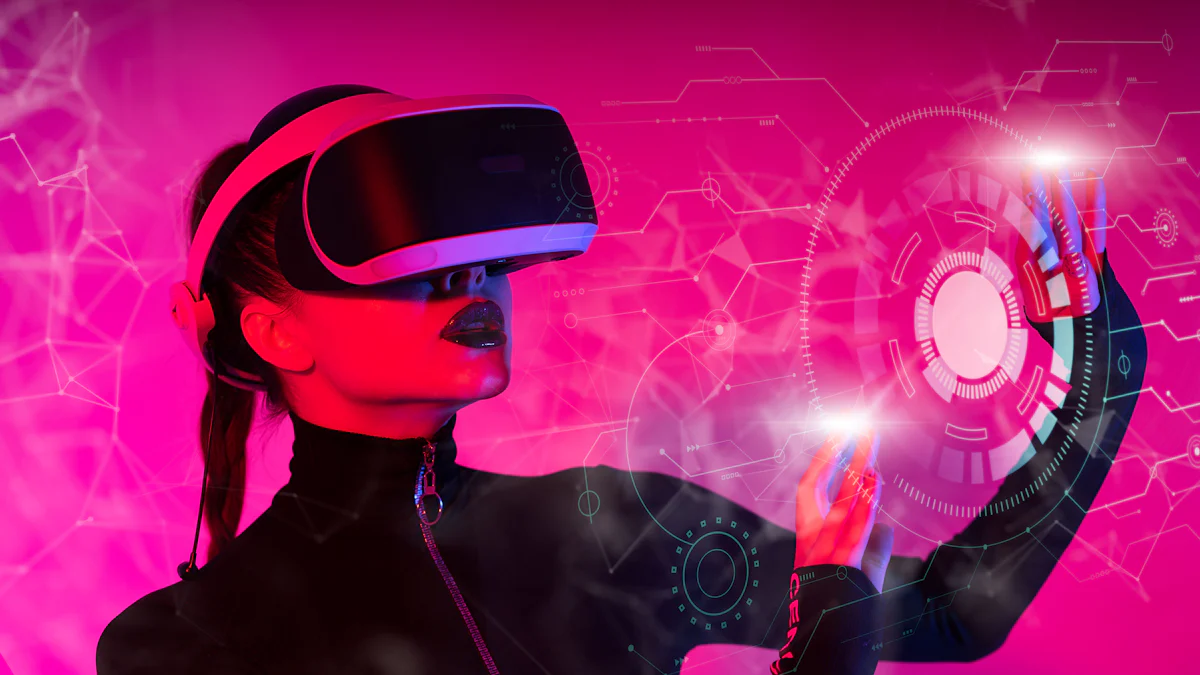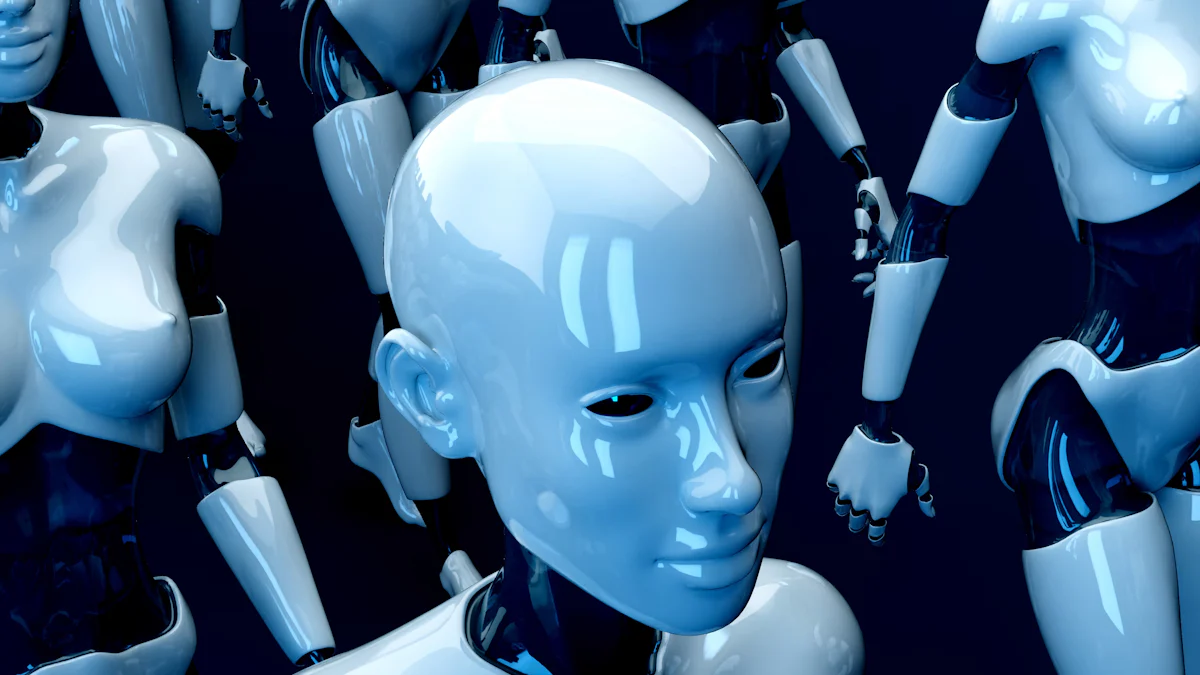Exploring Generative AI's Influence on Virtual Reality Gaming

Imagine stepping into a virtual world where everything feels tailor-made just for you. That's the magic of Generative AI in Virtual Reality (VR). This technology doesn't just create static environments; it crafts dynamic, personalized experiences that respond to your every move. As the market for Generative AI in VR is projected to skyrocket to USD 39.0 Billion by 2033, it's clear that this intersection holds immense potential. By exploring this synergy, you can discover how gaming becomes more immersive and engaging, offering endless possibilities for adventure and creativity.
Understanding Generative AI
Generative AI is a fascinating field that has been making waves across various industries. But what exactly is it, and how does it work? Let's dive into the basics.
Basics of Generative AI
Definition and key characteristics
Generative AI refers to a class of artificial intelligence that can create new content. Unlike traditional AI, which follows predefined rules, generative AI learns from data. It identifies patterns and uses them to generate original outputs. This ability to produce new and meaningful content sets it apart. You might think of it as a digital artist or composer, crafting unique pieces based on what it has learned.
How it works: Algorithms and models
Generative AI relies on complex algorithms and models. These algorithms analyze vast amounts of data to understand underlying patterns. Once they grasp these patterns, they can generate new content. The models used in generative AI are designed to learn and adapt. They constantly refine their ability to create, making each output more sophisticated than the last. This adaptability is what makes generative AI so powerful and versatile.
Applications of Generative AI
Generative AI isn't just a theoretical concept; it has real-world applications that are transforming industries.
Use cases in various industries
In healthcare, generative AI helps in drug discovery by simulating molecular structures. In the automotive industry, it aids in designing more efficient vehicles. The fashion world uses it to create innovative designs. These are just a few examples of how generative AI is making an impact. Its ability to generate new ideas and solutions is invaluable across sectors.
Specific examples in content creation
Content creation is one area where generative AI truly shines. It can write articles, compose music, and even create art. For instance, the game No Man’s Sky features 18 quintillion procedurally generated planets. This vast universe would take billions of years to explore fully. Generative AI makes such feats possible by creating diverse and engaging content. It empowers creators to push the boundaries of what's possible, offering endless possibilities for innovation.
Generative AI is not just a tool; it's a catalyst for creativity and innovation. By understanding its basics and applications, you can appreciate its potential to transform the world around us.
Virtual Reality Gaming
Overview of Virtual Reality
Definition and evolution of VR
Virtual Reality (VR) lets you step into a digital world that feels incredibly real. It uses headsets to immerse you in dynamic 3D environments. VR has come a long way since its early days. Initially, it was just a concept in science fiction. Now, it's a thriving technology. Over the years, VR has evolved from simple simulations to complex, interactive experiences. You can explore virtual worlds that mimic reality or dive into fantastical realms that defy the laws of physics.
Current state of VR technology
Today, VR technology is more advanced than ever. Headsets are lighter and more comfortable. Graphics are sharper and more realistic. You can find VR experiences in various genres, like first-person shooters, adventure games, horror experiences, and driving simulators. The technology continues to evolve, offering even more immersive experiences. Developers are constantly pushing the boundaries, creating new ways for you to interact with virtual worlds.
VR in Gaming
Popular VR games and platforms
VR gaming is booming, with a wide range of popular games and platforms. Some of the most well-known VR games include Beat Saber, Half-Life: Alyx, and The Walking Dead: Saints & Sinners. These games offer unique experiences that you can't find in traditional gaming. Platforms like Oculus Rift, HTC Vive, and PlayStation VR provide access to a vast library of VR titles. Each platform has its own strengths, catering to different preferences and budgets.
Challenges and opportunities in VR gaming
VR gaming presents both challenges and opportunities. One challenge is the need for powerful hardware to run VR games smoothly. Not everyone has access to high-end equipment. Another challenge is motion sickness, which some players experience in VR. However, the opportunities are immense. Innovations like full-body haptic suits and AI-powered NPCs promise to enhance gameplay. These advancements could transform how games are developed and experienced. As VR technology improves, you can expect even more exciting possibilities in the world of gaming.
Intersection of Generative AI and VR
Generative AI is reshaping the landscape of Virtual Reality (VR) gaming. This powerful technology enhances your gaming experience by creating more immersive environments and enriching player interactions. Let's explore how this synergy transforms the way you engage with virtual worlds.
How Generative AI Enhances VR Gaming
Creating Immersive Environments
Generative AI crafts virtual worlds that feel alive and responsive. It analyzes your preferences and behaviors to tailor environments that suit your unique style. Imagine entering a game where the landscape changes based on your actions. The AI generates dynamic textures, objects, and landscapes, making each experience fresh and exciting. This adaptability not only enhances realism but also keeps you engaged, as no two gaming sessions are ever the same.
Enhancing Player Interactions
In VR gaming, interactions play a crucial role in immersion. Generative AI takes this to the next level by creating responsive non-player characters (NPCs) that learn from your actions. These AI-powered NPCs adapt their behavior, providing a more personalized and engaging experience. You might find yourself in a conversation with an NPC that remembers your past interactions, making the virtual world feel more connected and alive. This level of interactivity transforms how you connect with the game, offering deeper and more meaningful engagements.
Case Studies
Successful Implementations in Gaming
Several games have successfully integrated Generative AI to enhance their VR experiences. No Man’s Sky stands out as a prime example. This game uses procedural generation to create a vast universe with 18 quintillion planets. Each planet offers unique landscapes and ecosystems, providing endless exploration opportunities. The use of Generative AI in this game showcases its potential to create expansive and diverse virtual worlds.
Lessons Learned from Industry Leaders
Industry leaders have learned valuable lessons from implementing Generative AI in VR gaming. One key takeaway is the importance of balancing creativity and control. While Generative AI offers endless possibilities, developers must ensure that the generated content aligns with the game's vision and narrative. Another lesson is the need for continuous refinement. As AI models learn and adapt, they become more sophisticated, enhancing the overall gaming experience. These insights highlight the transformative power of Generative AI in revolutionizing VR content creation and user engagement.
Generative AI is not just a tool; it's a game-changer in the VR industry. By creating immersive environments and enhancing player interactions, it opens up new possibilities for gaming. As you explore these virtual worlds, you'll discover a level of engagement and realism that was once unimaginable.
Future Prospects

Emerging Trends
Innovations on the Horizon
Generative AI is set to revolutionize VR gaming with exciting innovations. Imagine stepping into a game where the environment evolves based on your actions. This isn't just a dream; it's becoming a reality. Generative AI can create personalized virtual worlds tailored to your preferences and past interactions. This level of customization enhances your immersion, making each gaming session unique.
Developers are exploring new ways to integrate AI into VR. For instance, AI can generate dynamic soundscapes that change with your movements. It can also create adaptive storylines that respond to your choices. These innovations promise to make VR gaming more engaging and interactive than ever before.
Potential Impact on the Gaming Industry
The impact of Generative AI on the gaming industry could be profound. By offering personalized experiences, it can attract a broader audience. Players will enjoy games that feel tailor-made for them, increasing engagement and satisfaction. This could lead to longer playtimes and higher retention rates.
Moreover, Generative AI can streamline the game development process. It can automatically generate content like landscapes, characters, and quests. This reduces the workload for developers, allowing them to focus on refining gameplay mechanics and narratives. As a result, we can expect more diverse and innovative games in the future.
Challenges and Considerations
Ethical and Technical Challenges
While Generative AI offers exciting possibilities, it also raises ethical and technical challenges. One concern is the potential misuse of AI to create harmful or unsettling content. Developers must ensure that AI-generated experiences are safe and respectful. This requires careful oversight and regulation.
Technical challenges also exist. Creating realistic and responsive virtual worlds demands significant computational power. Not all players have access to high-end hardware, which could limit the reach of AI-enhanced VR games. Developers must find ways to optimize performance without sacrificing quality.
Balancing Creativity and Control
Balancing creativity and control is crucial when using Generative AI in VR gaming. While AI can generate endless possibilities, developers must ensure that the content aligns with the game's vision. This requires a delicate balance between allowing AI to innovate and maintaining control over the final product.
Developers must also consider player agency. While AI can create personalized experiences, players should still feel in control of their journey. Ensuring that players have meaningful choices and interactions is key to creating engaging and immersive games.
In conclusion, the future of Generative AI in VR gaming is bright, but it comes with challenges. By addressing these issues, developers can unlock the full potential of this technology, creating unforgettable gaming experiences for players worldwide.
Generative AI has revolutionized VR gaming, transforming it from a visual spectacle into an interactive and immersive experience. By creating intelligent virtual characters and personalizing content, Generative AI enhances your engagement and satisfaction. You can enjoy unique and evolving experiences as game environments adapt in real-time to your interactions. This technology not only drives creativity but also encourages developers to experiment with novel concepts. As you explore these dynamic virtual worlds, you'll find that Generative AI has truly redefined the future of gaming, offering endless possibilities for adventure and innovation.
See Also
The Impact of AI Generation on Virtual Reality Adventures
The Tomorrow of Virtual Laboratories Powered by Generative AI
The Transformation of Art through Generative AI
Exploring the Evolution of AI Generation: A Path to Creativity and Progress
AI Generation in Video Game Development: Crafting Authentic Realities
